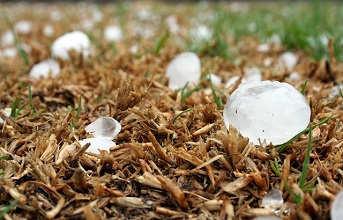According to Tamara Soyka, Head Cat Perils EMEA, Swiss Re Institute, the frequency of exorbitant hail events in France is underestimated in current industry benchmarks, suggesting that adjustments to insurance risk assessment and pricing are needed to ensure that insurance products for hail remain sustainable over the long term.
 Soyka cites the many severe convective storms in the spring and summer of 2022, which caused unprecedented losses, chiefly due to hail damage.
Soyka cites the many severe convective storms in the spring and summer of 2022, which caused unprecedented losses, chiefly due to hail damage.
She adds that estimates of the French Federation of Insurance, France Assureurs, amount to a total insured hail loss of around €4.8bn from more than one million claims for the year 2022, with about €3bn in property loss.
for France, this makes 2022 the costliest year in terms of hail losses.
The Institute suggests that the shift towards substantially higher losses from hailstorm events began in 2008.
This loss increase can be attributed to macro trends such as economic growth, inflation, urbanisation, and an increase in built-up land area, along with vulnerability changes and social inflation trends.
Soyka notes that it is crucial to carefully account for such trends when quantitatively evaluating historical losses, adding that 2022 particularly highlights the need for appropriate de-trending, as it has been a year with high inflation which has impacted repair costs especially.
Climate change could also influence the intensity and frequency of convective storms, Soyka adds, though the trends are currently highly uncertain. For now, socio-economic factors are presumably changing at a faster pace and are the dominating driver of the observed loss trend.
Soyka writes, “For France, the 2022 annual hail loss exceeds the previously observed range by far and there is large uncertainty in return period estimations. From an event (or loss-occurrence) perspective, the Pentecost storms in 2014 (or Ela) used to be the key industry benchmark.
“It was the most expensive hail event for France prior to 2022, with a property loss around EUR 600–700 million (adjusted to 2022 values, depending on the method). The market return period of Ela was commonly assumed to be between 20–50 years.
“This year, both Qiara and Maya exceeded the Ela event loss, which demands a reconsideration of event return-period assumptions in the industry.
“The event-loss level of EUR 600–700 million (2022 values) has now been exceeded three times in the French market in the last ten years alone (Ela, Maya, Qiara) and can be considered a robust benchmark, even when acknowledging that the two 2022 events may not be independent.”
Concluding, Soyka suggests that an appropriate observation period needs to be selected in order to establish a representative loss history. She adds that given the rising trend for hail losses in Europe, and the globally observed change in hail loss statistics, the “new normal” should be accounted for and reflected in a reasonable loss experience window.


